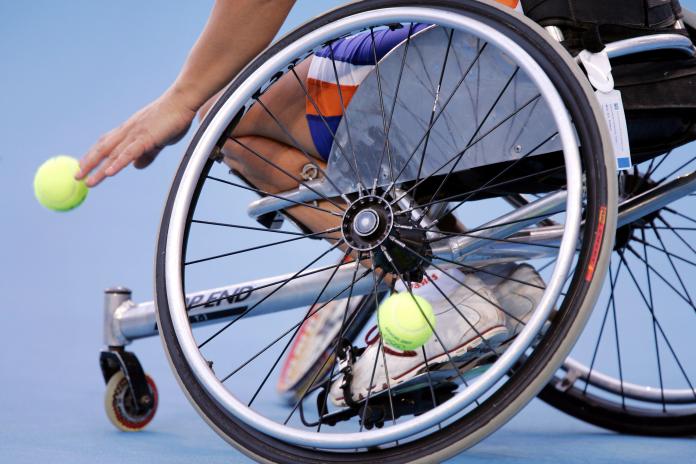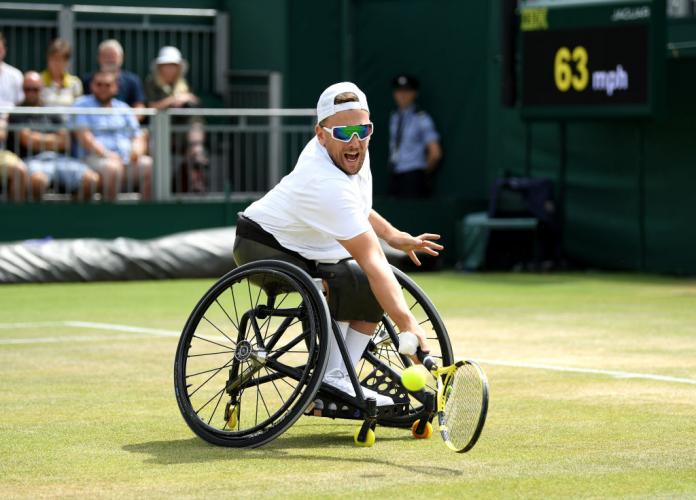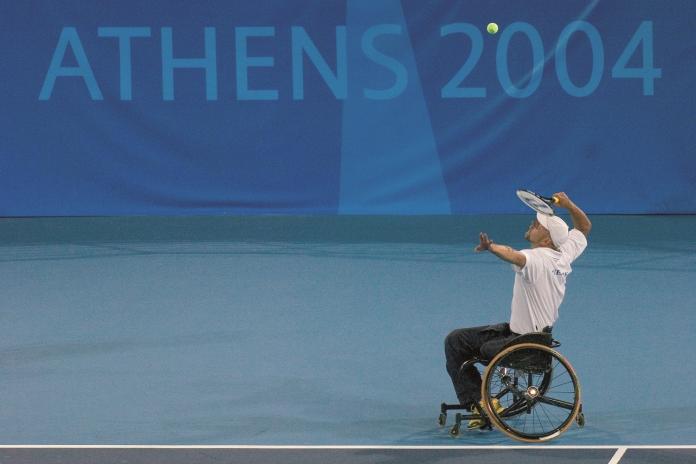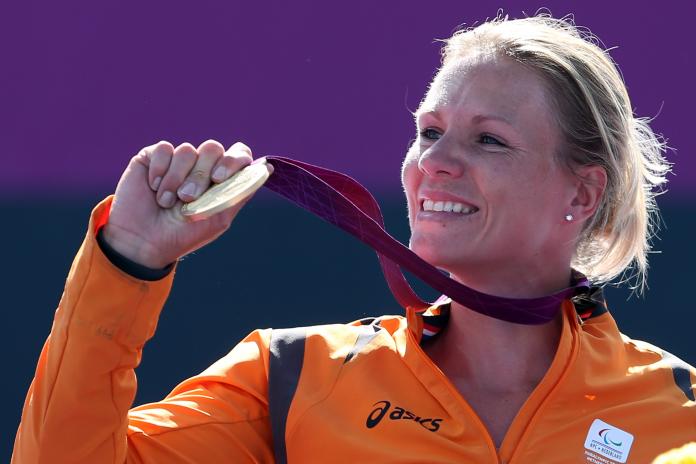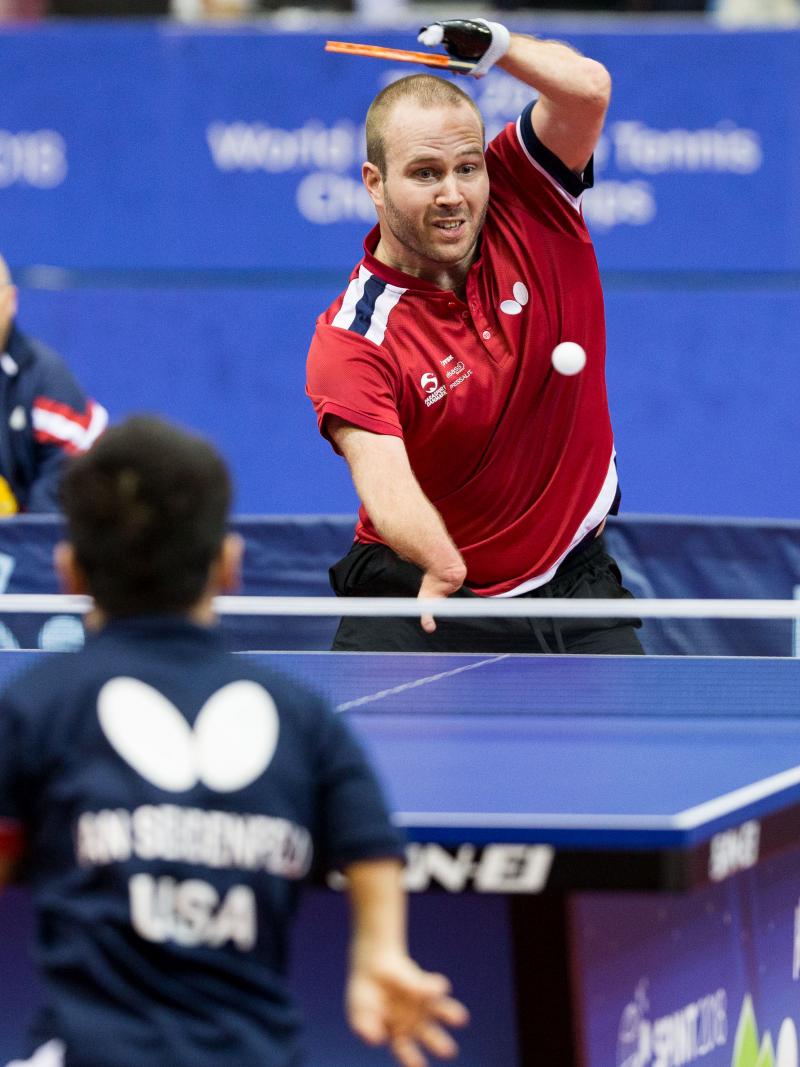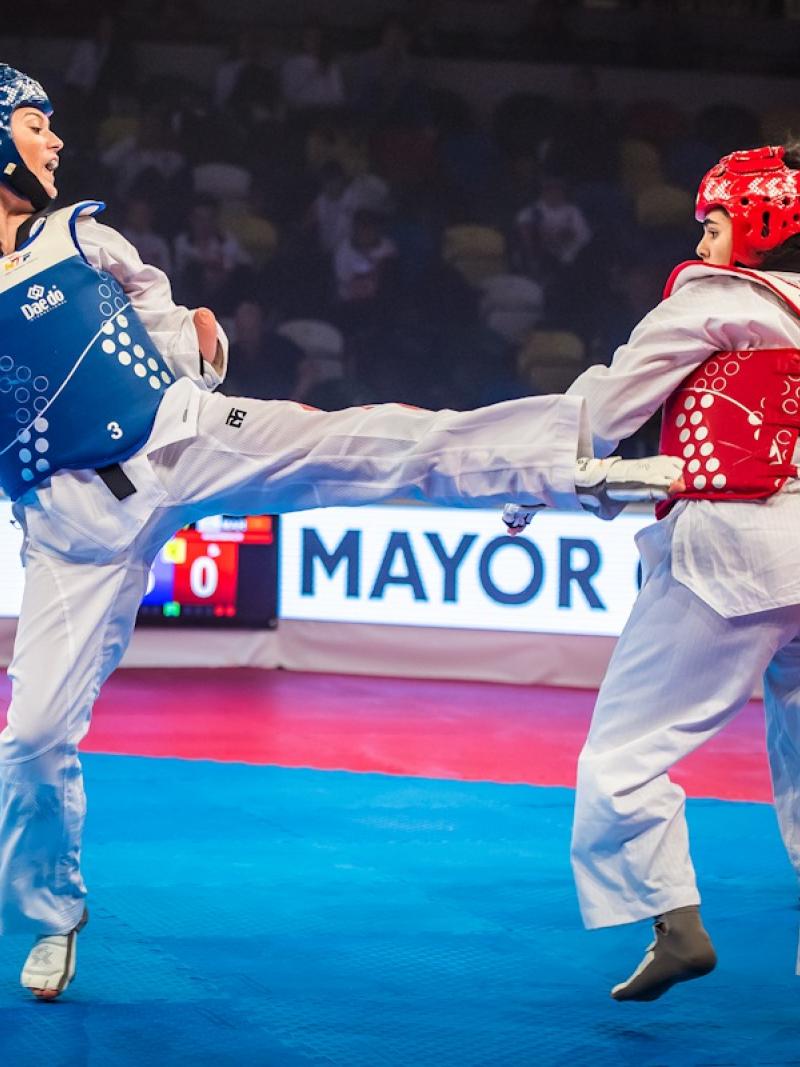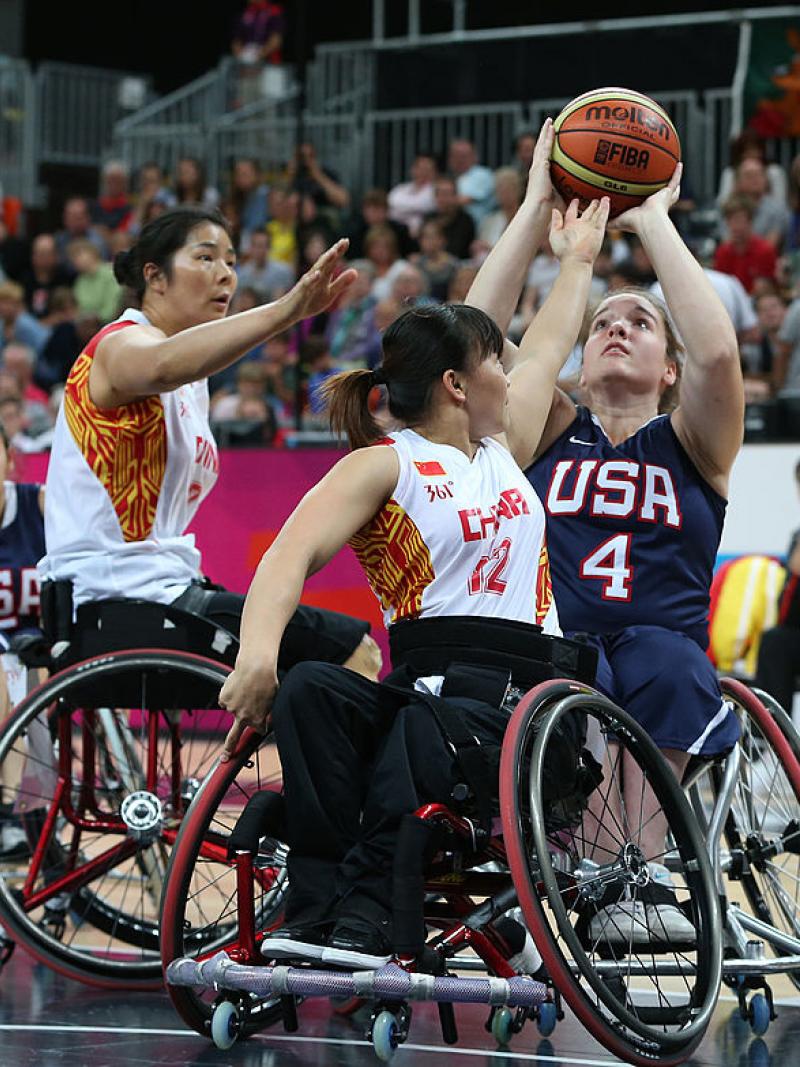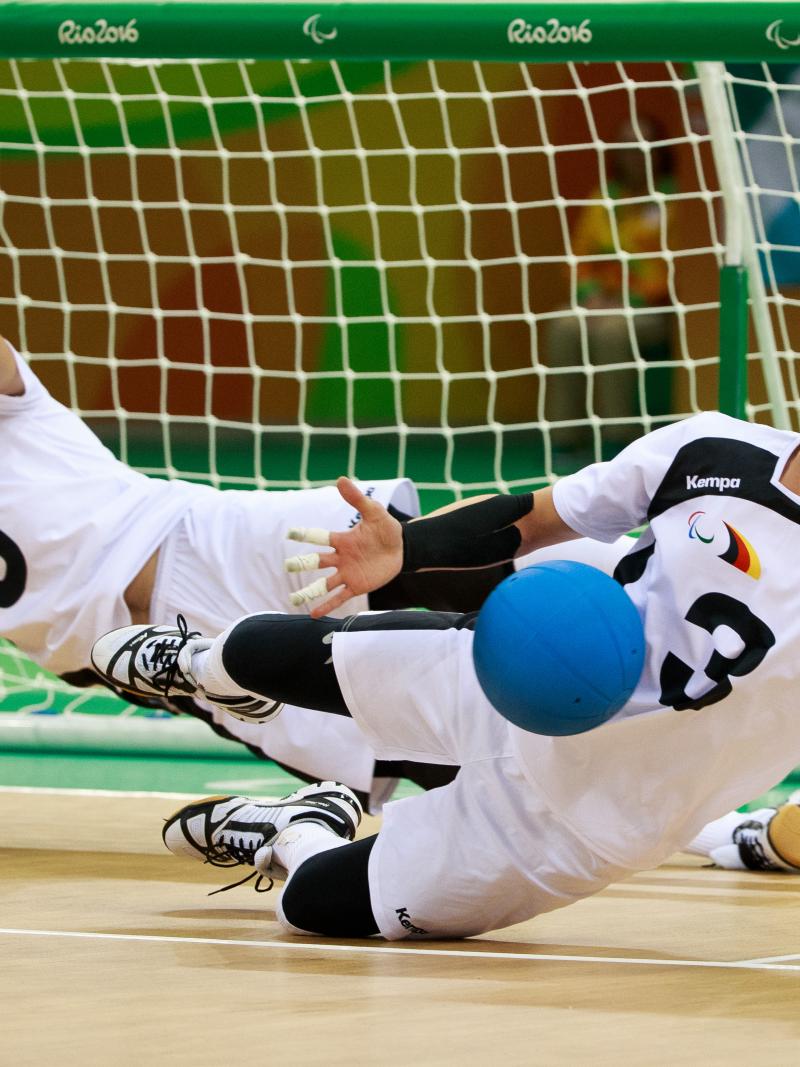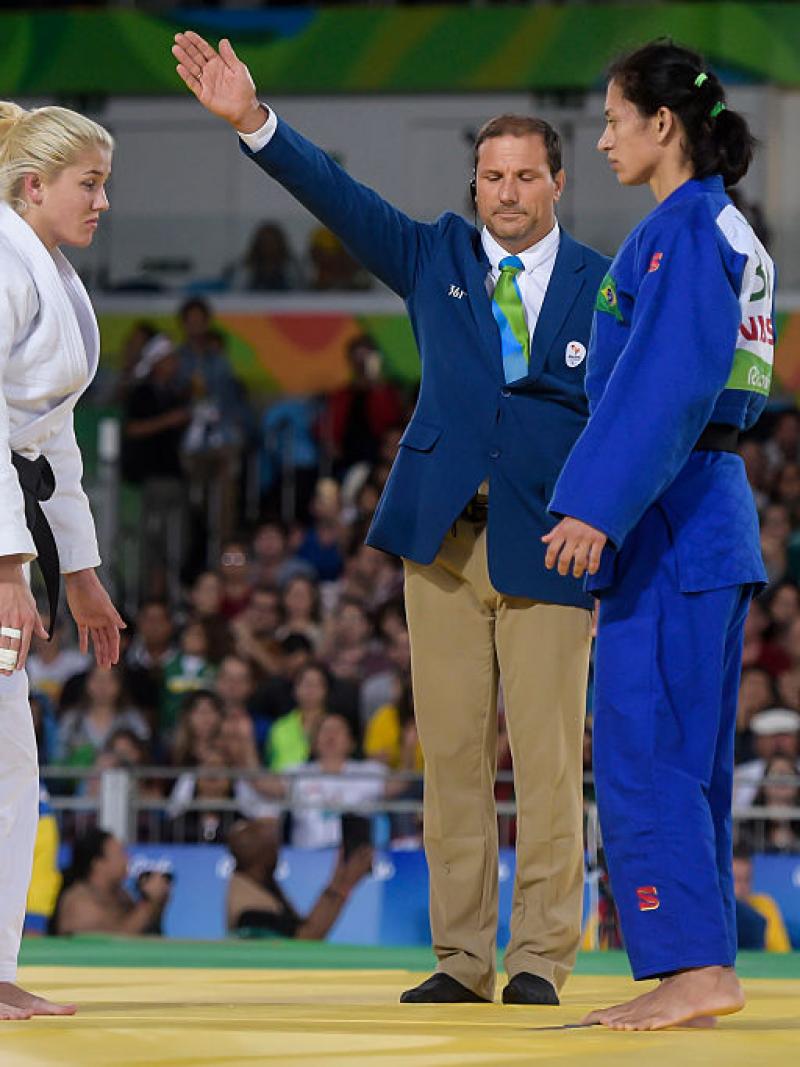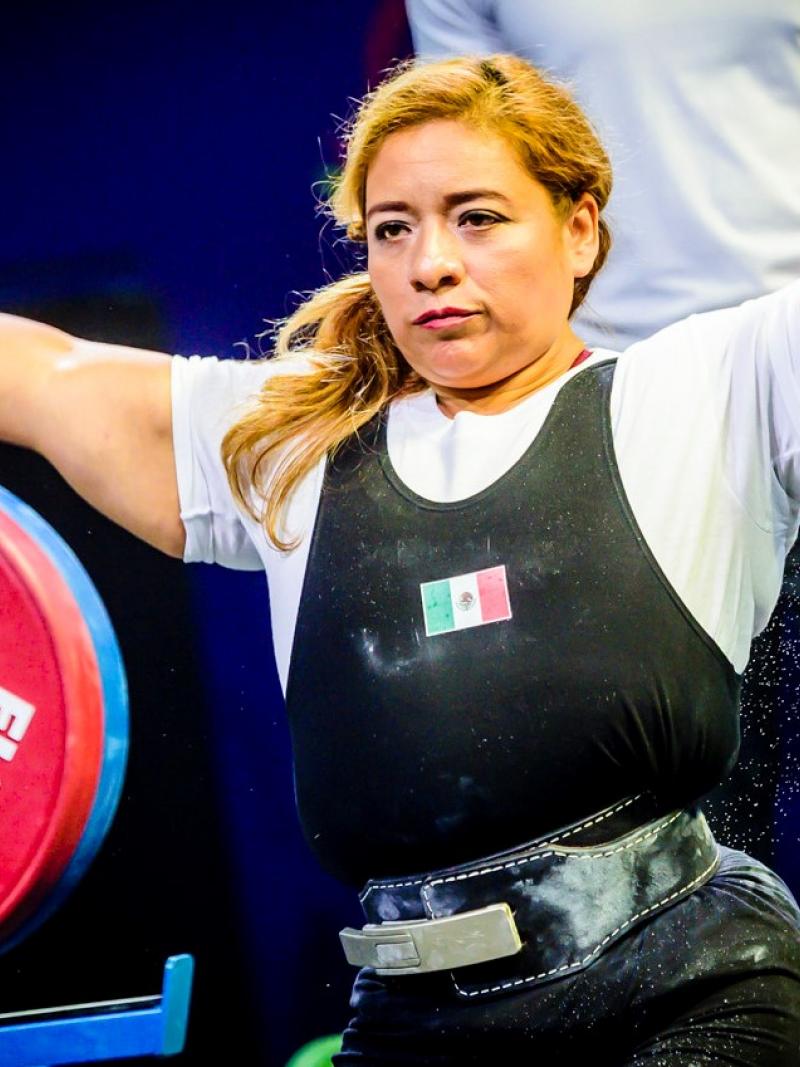Sport Week: 10 things to know about wheelchair tennis
The only rule change in wheelchair tennis is that two bounces of the ball are allowed 29 Jul 2021
What is the main difference between wheelchair tennis and tennis? When was the Para sport created? Who is the most successful player ever? Everything you need to know about one of the most exciting Paralympic sports.
1. Wheelchair tennis originated in California in 1976 after former acrobatic skier Brad Parks was paralysed in a skiing accident. Parks started experimenting with hitting tennis balls from his wheelchair while in rehabilitation and went on to join forces with physical therapist Jeff Minnebraker to develop and promote the sport in the USA before its rapid growth internationally.
2. Wheelchair tennis requires no adaptations to the dimensions of the tennis court, nor the height of the net, and is played using conventional tennis balls and rackets. The only specialist item of equipment is a tennis wheelchair. Along with wheelchairs used in other Para sports, such as wheelchair basketball and badminton, modern tennis wheelchairs have two larger cambered wheels at the rear to optimise stability and manoeuvrability, two small castor wheels at the front and one of two small ‘anti-tip’ castor wheels to the rear.
3. The only rule change in wheelchair tennis is that the wheelchair player is allowed two bounces of the ball. Providing the first bounce is within the usual parameters of the court, the second bounce can be outside of the court.
4. Wheelchair tennis has two sports classes – the Open Division and the Quad Division.
Players are eligible to compete in the Open Division if they have a permanent physical disability that results in substantial loss of function in one or both lower limbs and that meets or exceeds the sport’s eligibility criteria. Such players who also have a permanent physical disability that results in substantial loss of function in one or both upper limbs, and where at least three extremities are affected, are eligible to compete in the Quad Division.
Male and female players in the Open Division compete in separate men’s and women’s singles and doubles draws, whereas male and female players in the Quad Division compete together in one quad singles or doubles draw.
5. The ITF’s Wheelchair Tennis Tour began in 1992 with just 11 international tournaments. Today, it has grown to feature more than 160 tournaments in over 40 countries. Tournaments are organised in a pyramid structure, with ITF Futures tournaments at the base of the pyramid, working up through ITF 3 Series, ITF 2 Series, ITF 1 Series and Super Series events, with Grand Slam and ITF Masters Series tournaments at the top of the pyramid.
6. Wheelchair has its own annual team event, the BNP Paribas World Team Cup, and its own year-end singles and doubles championships, the NEC Wheelchair Singles Masters and UNIQLO Wheelchair Doubles Masters.
7. Wheelchair tennis was first played at the Paralympics as a demonstration event in Seoul, South Korea in 1988 and became a full medal sport awarding medals in men’s singles and doubles events in Barcelona in 1992. Quad singles and doubles events made their Paralympic Games debut in Athens in 2004. Since then, there have been six wheelchair tennis medal events at subsequent Paralympics.
8. A competitive wheelchair tennis event was first played at a Grand Slam at the 2002 Australian Open. Wheelchair tennis has been part of all four Grand Slams – the Australian Open, the French Open (Roland Garros), Wimbledon and the US Open - since 2007. Wimbledon introduced men’s and women’s singles events in 2016 and Roland Garros and Wimbledon introduced quad singles events to their schedules in 2019.
Only two players have held all four Grand Slam singles titles at the same time - Diede de Groot achieving the feat first in June 2019 after winning her maiden Roland Garros title, while Dylan Alcott held all four quad singles Grand Slam singles titles at the same time after winning the Wimbledon quad singles title in July 2019.
9. Esther Vergeer is arguably the most famous wheelchair tennis player of all-time. She won eight medals – seven of them gold medals - in four successive Paralympic Games between 2000 and 2012. Her women’s singles and doubles gold medal matches at London 2012 turned out to be the last two matches of her illustrious career. She announced her retirement in February 2013, having remained unbeaten and as world No. 1 in the women’s singles world rankings for over 10 years.
Vergeer ended her career unbeaten in 470 singles matches that stretched back to end of January 2003. During that time, the biggest threat to her winning streak came when she faced a match point against fellow Dutchwoman Korie Homan in the women’s singles gold medal match at the Beijing 2008 Paralympics. Vergeer won 169 singles titles and 136 doubles titles during, was named ITF World Champion (year-end No. 1) for 13 successive years and won 14 successive Singles Masters titles.
10. Shingo Kunieda of Japan is the most successful men’s wheelchair tennis player of all time. Tokyo-born Kunieda heads to his home Paralympics as holder of the record for most Grand Slam titles won by a wheelchair tennis player, having surpassed the previous record he shared with Vergeer when he won his seventh US Open men’s singles title in September 2020. Kunieda has currently won 45 career Grand Slam titles in singles and doubles.
 Facebook
Facebook
 Instagram
Instagram
 Twitter
Twitter
 Youtube
Youtube


